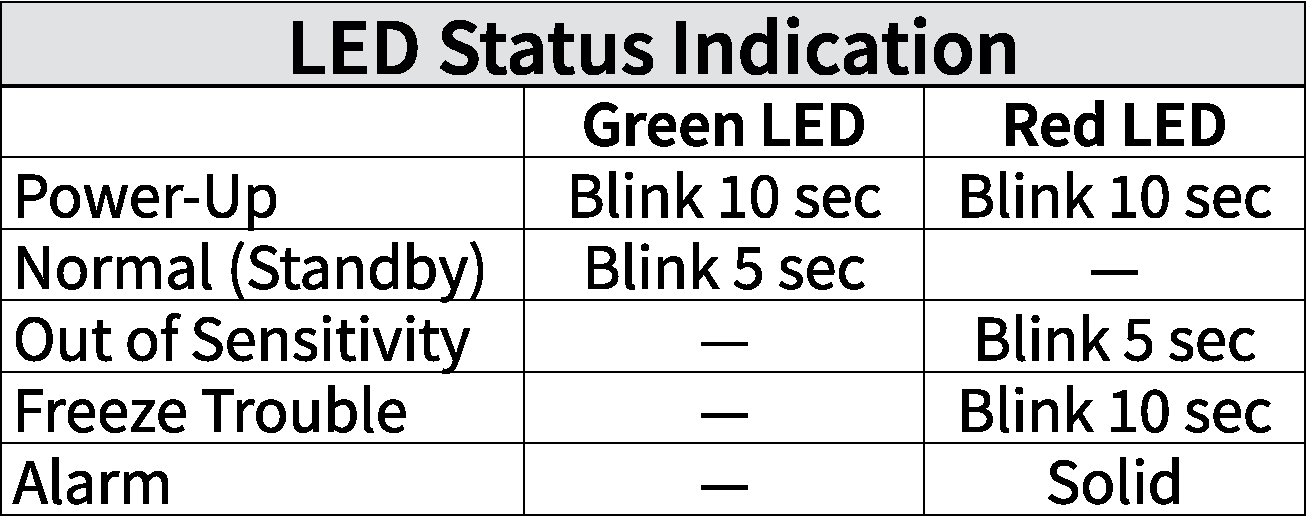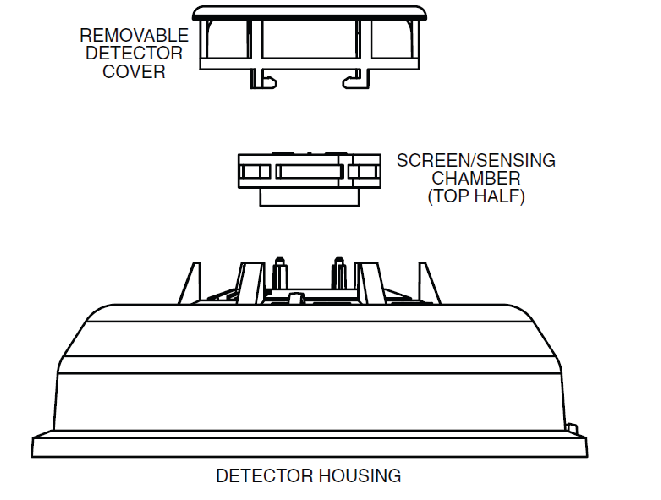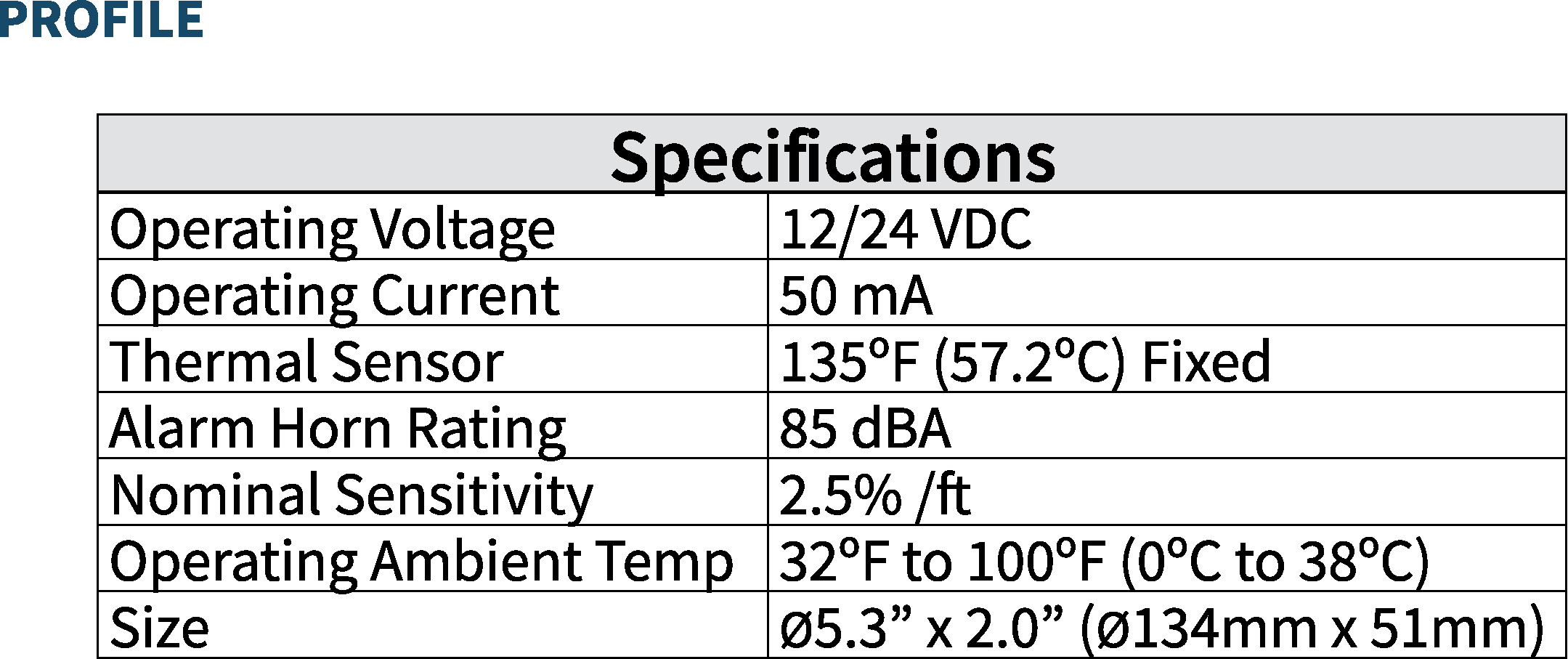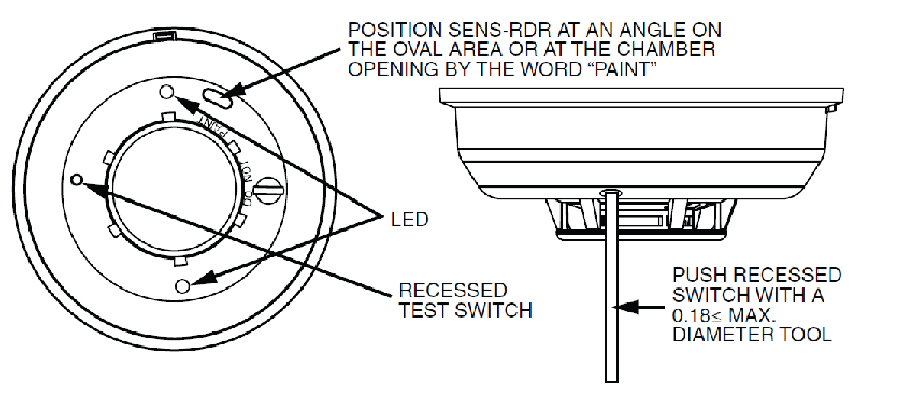Detailed information on the smoke alarms
| Smoke alarms alert you of the presence of smoke. The smoke alarms in the Hybrid Cube are for use as an evacuation device when inside the Cube. The smoke alarms installed in the Hybrid Cube offer intelligence through drift compensation and smoothin alogorithms to reduce unnecessary maintenance alarms. Green and red LEDs make status indication more intuitiev and the sensitivity measurement is precise and complete within seconds. |
The two (2) smoke alarms installed in the Hybrid Cube run in tandem and allows for remote annunciation — one is installed on the ceiling in the equipment room and the other on the wall in the generator room. Features 12 VDC Photoelectronic / Thermal Sensing Remote Maintenance Signaling |
||||||||
|
|
||||||||
| OPERATION: | |||||||||
| During initial power-up, the red and green LEDs will blink synchronously once every ten seconds. It will take approximately 80 seconds for the detector to finish the power-up cycle. If, during power up, the detector determines there is excessive electrical noise in the system such as caused by improper grounding, both LEDs will blink for up to 4 minutes before displaying detector status. |
|||||||||
 |
 |
||||||||
| After power-up has completed and the detector is functioning normally within its sensitivity range, the green LED blinks once every five seconds. If the detector is in need of maintenance because its sensitivity has shifted outside the listed limits, the red LED blinks once every five seconds. When the detector is in the alarm mode, the red LED latches on. The LED indication must not be used in lieu of the tests specified under Testing. In a freeze trouble condition, the red LED will blink once every 10 seconds. | |||||||||
| Before performing maintenance on the detector, notify the proper authorities that maintenance is being performed and the system will be temporarily out of service. Disable the zone or system undergoing maintenance to prevent any unwanted alarms. Power must be removed from the detector before performing maintenance of any kind. | |||||||||
|
MAINTENANCE: 1. Remove the detector cover by turning clockwise. |
 |
||||||||
|
TESTING: Detectors must be tested following maintenance. After power-up, allow 80 seconds for the detector to stabilize before testing. |
|
||||||||
| Smoke Entry Test: Canned aerosol simulated smoke (canned smoke agent) may be used for smoke entry testing of the smoke detector. Tested and approved aerosol smoke products are: |
|||||||||
 |
|||||||||
| When used properly, the canned smoke agent will cause the detector to go into the alarm. Refer to the canned smoke manufacturer's instructions for proper use of their canned smoke agent. | |||||||||
| If the detector fails either of the above tests, the wiring should be checked and it should be cleaned as outlined in the Maintenance section. If the detector still fails, it should be replaced. Notify the proper authorities when the system is back in service. |
|||||||||





